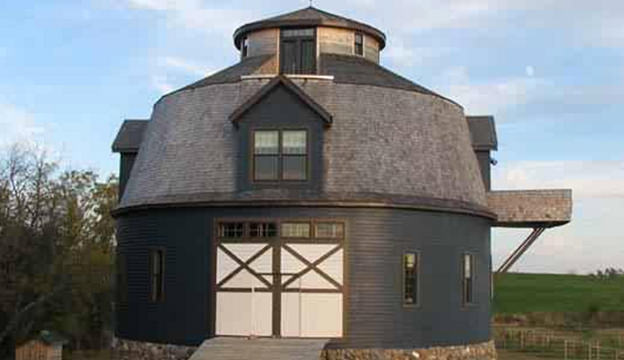
The 50- by 80-foot barn on the farm where I grew up was built in 1922, largely from home-sawn lumber. Few modern farmstead woodlots—hobby farm or otherwise—could supply the boards, much less the beams, that went into that barn. Likewise, few of us today have the knowledge to cut the mortises and tenons that hold those beams together. Yet today, building a new barn or outbuilding that’s just right for your farm couldn’t be easier or more affordable thanks to barn kits.
Barn kits are nothing new in American agriculture. Sears Roebuck was famous for its house kits. Less well-known are the various barn kits the company offered through the 1930s. Today’s kits are considerably more expensive than the 30- by 54-foot gambrel-roofed No. 12 that Sears sold for $480; however, they also come in greater variety.
Perhaps better called “building kits,” designs are available for everything from garden sheds and garages, to horse barns and arenas, to more traditional-style multi-use livestock barns with haymows and grain storage. Most builders have basic designs, but size, accessories and other variables can quickly make any building unique. Of course, like barns of the past, some are more customized than others.
Varieties of Building Kits
Aside from buying your farm or building a house, selecting the barn plan and provider that’s right for you and your farm may be one of the most long-term decisions you’ll make as a farm owner. After all, the barn kit you select is for a building that will likely outlast your use of it. Unlike a tractor or truck, there isn’t a ready resale market, and unlike a sheep or cow, you don’t have the option of passing along your mistake. Perhaps that’s why the barn kit companies interviewed for this article stressed the importance of communication as the basis for decision making.
“We like customers who have researched the companies in the market and thought about the look they want for their barns,” says Jule Goeller of Sand Creek Post & Beam in Wayne, Neb. “There really are differences in providers. You can’t just look at price.”
Christopher Wilman of Beam Barns in Santa Rosa, Fla., counsels prospective customers to be realistic about what they’re getting. He notes that people often look at the price of a post-and-beam barn and assume it’s a low-cost way to get a post-and-beam home, but that quickly turns into a custom home at a custom-home price.
“Most of our customers are in their 40s and 50s and have never done any building before, so we spend a lot of time with our customers before they order,” says Len Faria of Shelter Kit in Tilton, N.H. “We talk about uses for the building, how many animals or the type of equipment [it will house]. We also discuss how the building goes together and how much time it will take.”
Faria suggests starting the building process with local building or zoning officials to learn about requirements for the type of building you want to put up, including allowances for local weather conditions, site access and plans required before building.
Once these factors have been identified, finding the company to work with is a matter of personal taste, budget and comfort level. A traditional post-and-beam design with mortise and tenon and other complex joinery requires more technical expertise to manufacture and erect. Steel joinery, where steel plates are bolted to and through beam joints, is a common and lower-cost alternative. Socket Systems, LLC, of Canfield, Ohio, takes this a step further with its Lumber Link post-and-beam connectors, which allow the do-it-yourselfer to raise frames without heavy lifting equipment. Depending on the company, packages vary from framing hardware only, to lumber and most hardware, to complete building kits that include every nail, shingle and pane of glass you’ll need. Likewise, you can do all the work, hire local contractors to handle the job, or in some cases, have erection and other finishing work handled by the kit maker.
Faria advises prospective kit buyers to verify what’s included in the building kit, what will need to be procured locally and whether the building is something an amateur can erect. Ask for details such as the source of the wood, suggests Goeller.
“There are companies that advertise kits and then order the wood to be delivered from the customer’s local lumber yard,” she explains.
Faria suggests visiting with other customers before ordering. He also suggests doing an Internet search for the company.
“If there are angry customers, there will likely be a blog mention or something about the problem,” says Faria.
Foundations are one area he suggests deserve special attention. Many firms provide plans with specifications and exact placement and size of piers or a full foundation. Even so, problems can and do occur when a local contractor fails to follow the plan.
Knowing how your builder deals with problems is important, as is knowing what level of quality you’re willing to pay for, adds Goeller.
“Not everyone wants the same thing,” she notes. “With a kit barn, you can control what the barn will look like and how much you end up paying.”
Building a barn with a kit may not be the same as sawing out your timbers from trees in your woodlot, but it may be just as satisfying. Just take some time to know your capabilities and your needs, and get to know your prospective kit provider and the packages they provide. Do your homework now, and your barn will be doing its job long after you’ve finished doing yours.
This article originally appeared in the March/April 2011 issue of Hobby Farms.




